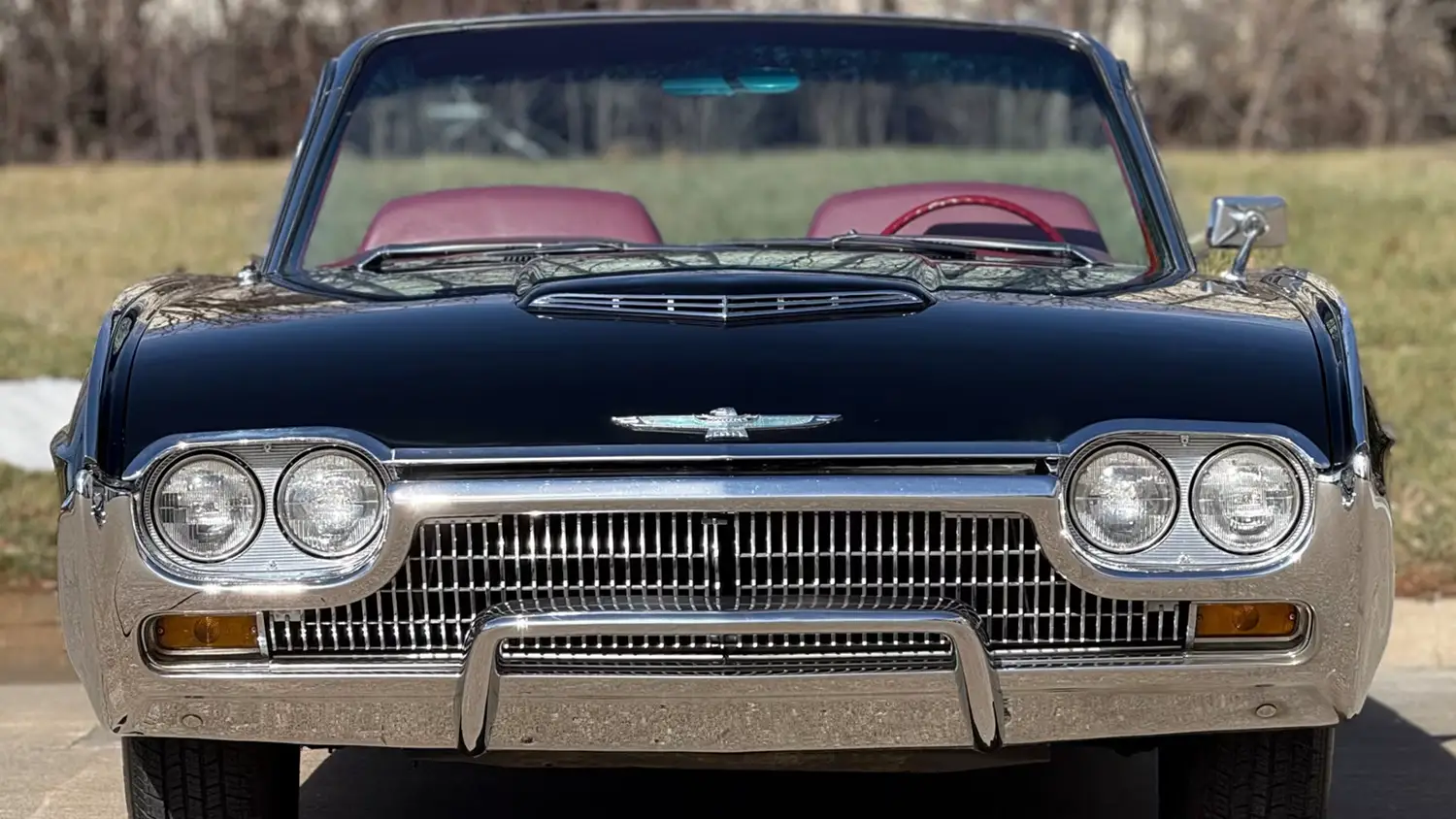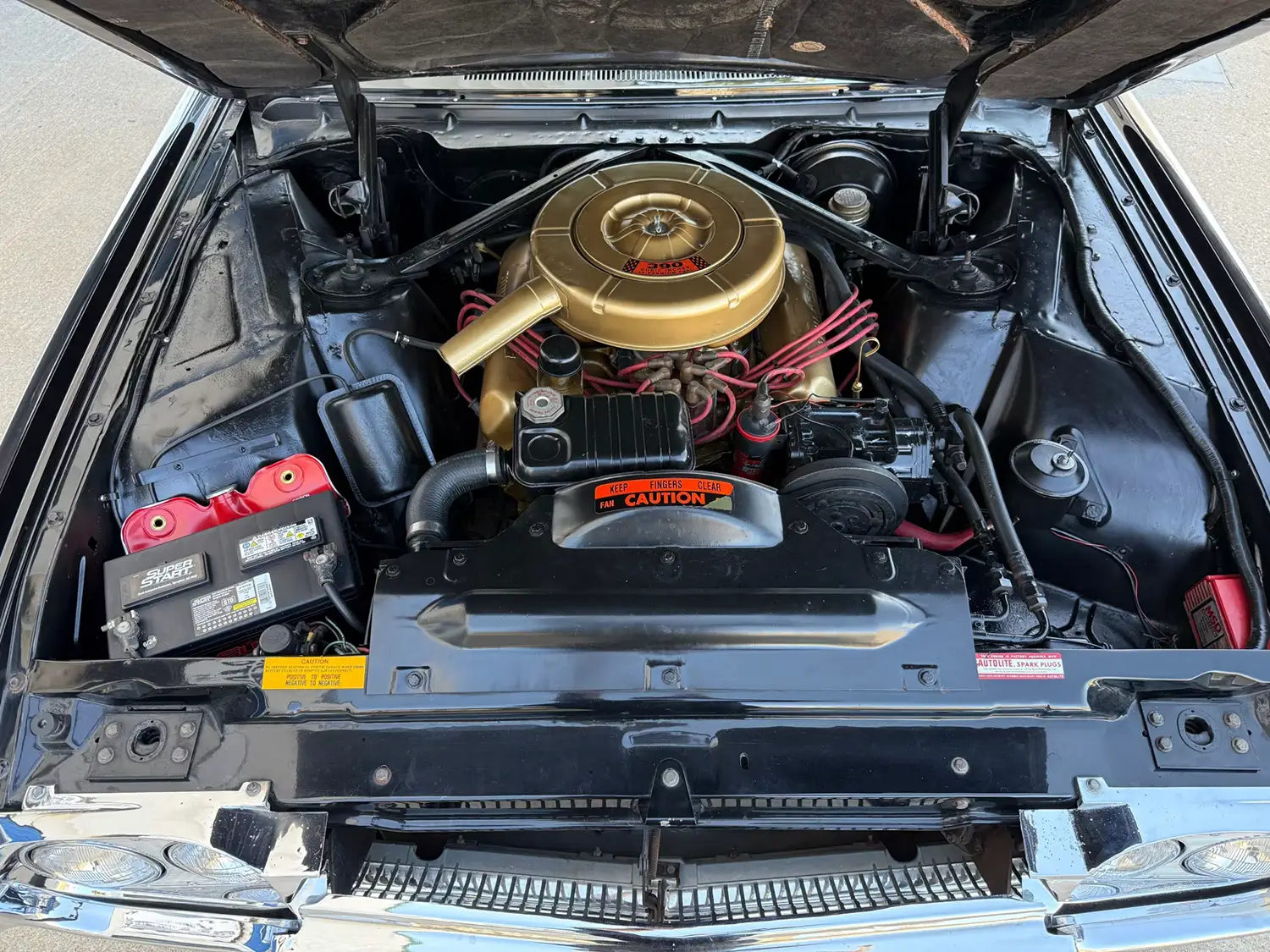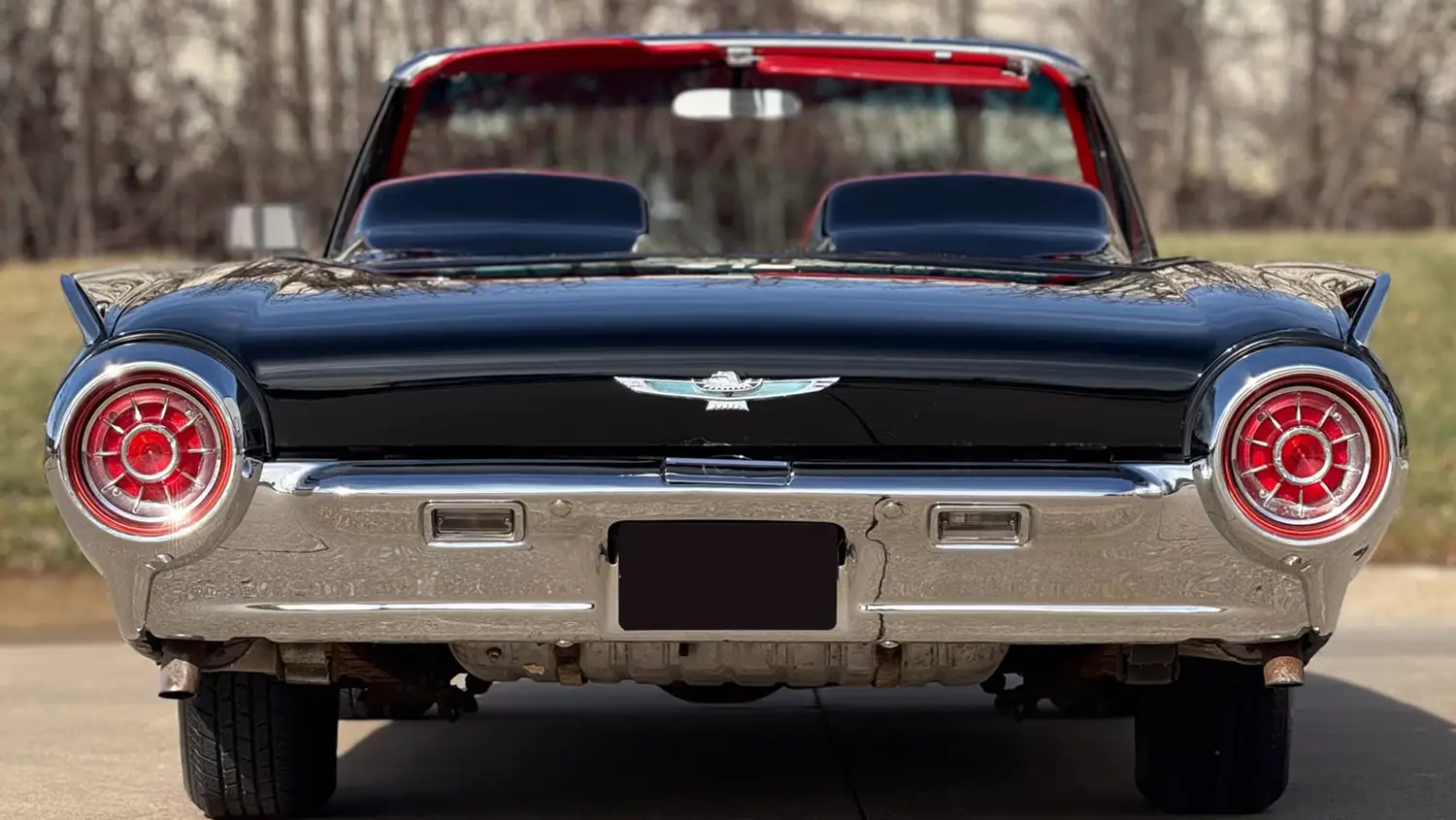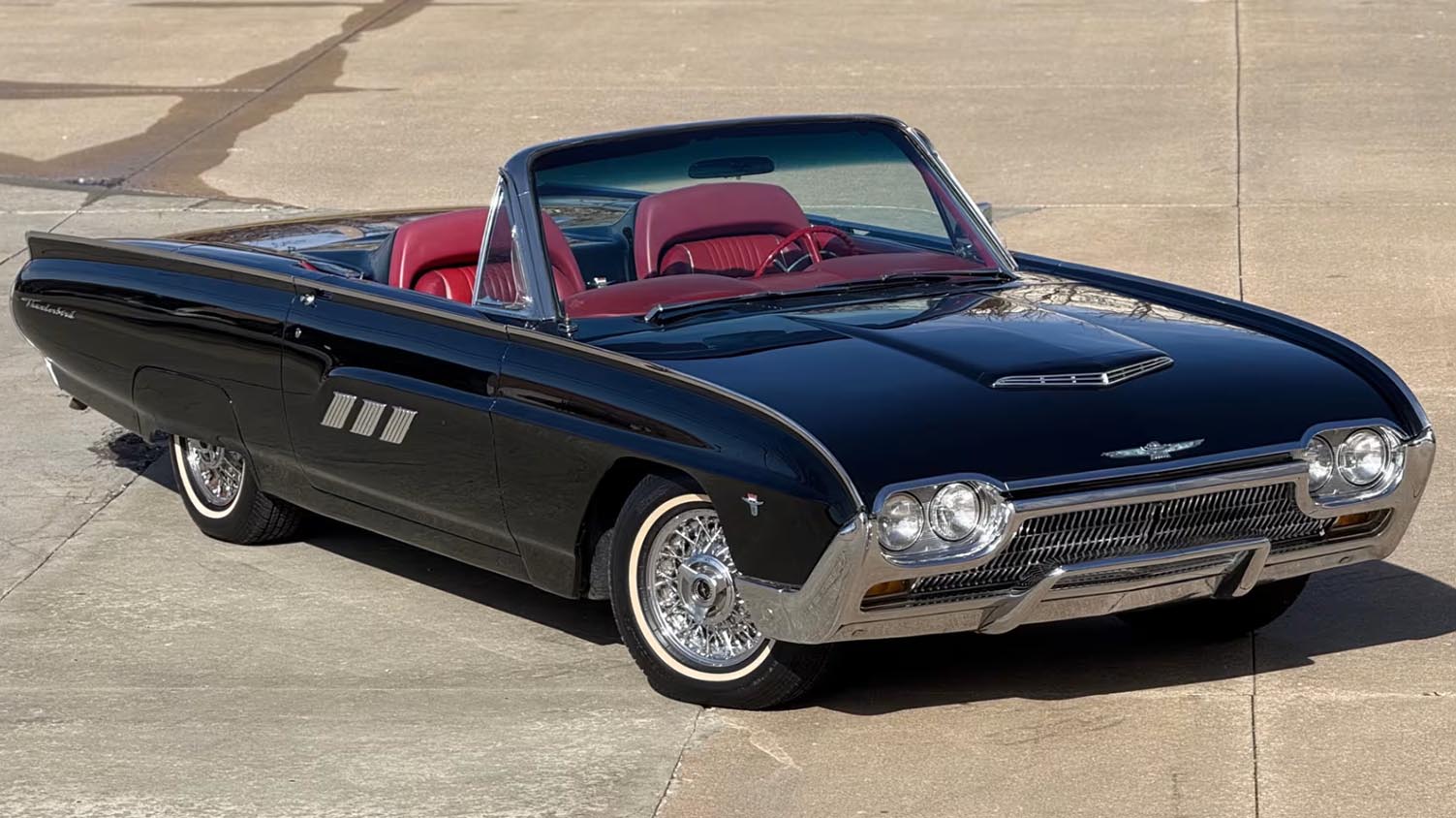
The 1963 Ford Thunderbird Convertible represents the elegant conclusion of Ford’s iconic third-generation personal luxury car. Known to enthusiasts as the “Bullet Bird,” this design iteration offered a striking, futuristic profile. Its sleek, fuselage-like body and jet-age styling captured the optimism and excitement of the early 1960s. This specific model, finished in classic Raven Black over a vibrant Red interior, showcases a highly desirable color combination. Furthermore, the inclusion of the Sports Roadster appearance package elevates its distinct two-seater look.
The Distinctive “Bullet Bird” Design Language
Ford introduced the third-generation T-Bird in 1961, bringing a dramatic stylistic shift to the market. The bodylines were clean, long, and aerodynamically inspired, setting it apart from its “Square Bird” predecessor. Importantly, the 1963 model year brought subtle refinements to the grille and trim. These changes ensured the final iteration was the most polished and reliable of the series. Consequently, the 1963 Ford Thunderbird Convertible is highly sought after by collectors today.
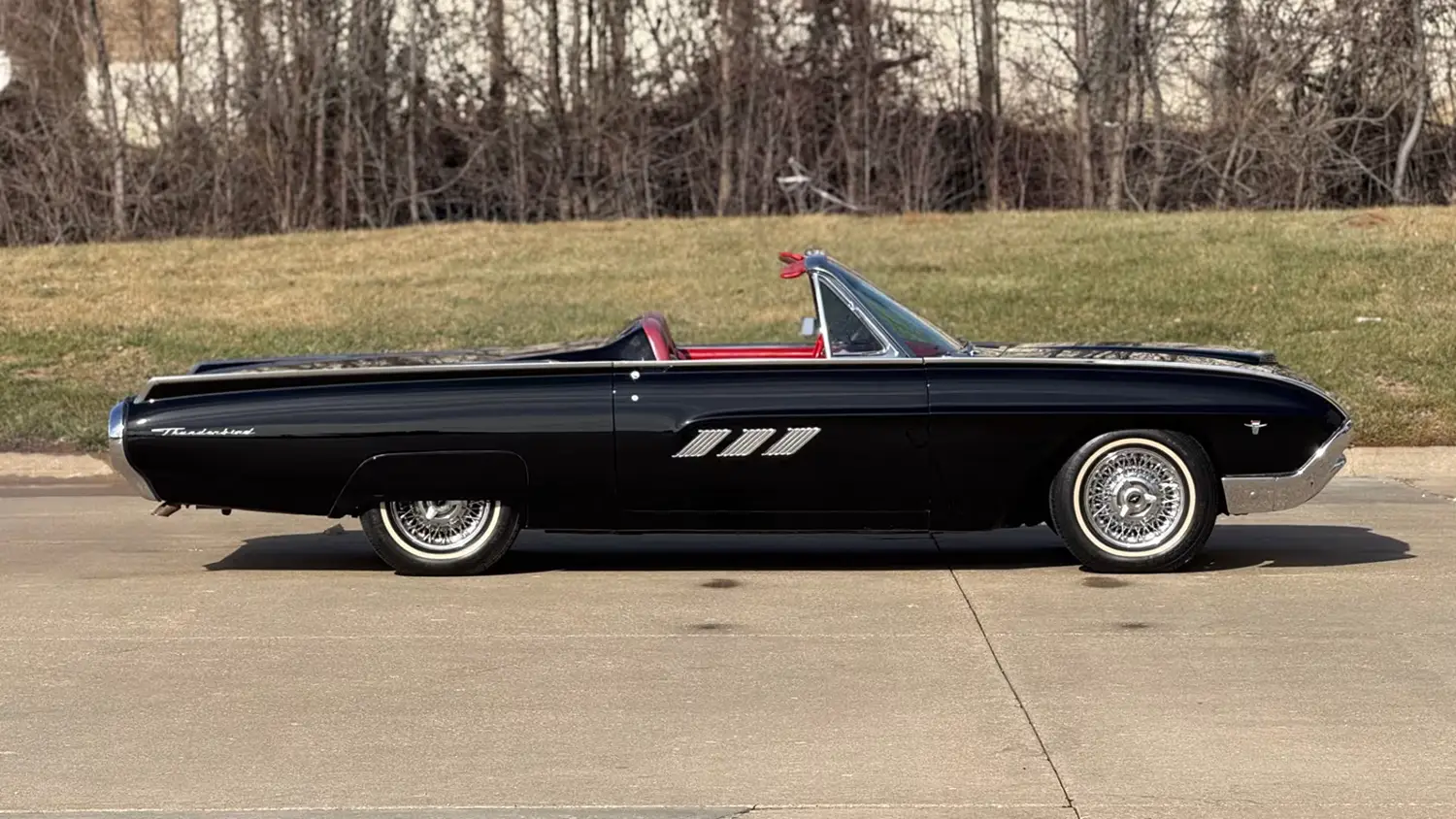
Refined Exterior and Sports Roadster Accents
The Raven Black exterior provides a timeless, sinister elegance that suits the car’s sleek lines. The functional power-operated convertible top tucks away neatly for a pure open-air feel. Notably, this example includes the Sports Roadster appearance package, which enhances its sporty appeal. This package features the striking Kelsey-Hayes wire wheels, providing a classic, upscale touch. Additionally, the convertible top itself is in Black, completing the dramatic tri-color scheme.
Interior Luxury and Innovative Features
Stepping inside reveals a bold Red interior, a perfect contrast to the exterior’s sobriety. The Thunderbird pioneered the personal luxury segment with its focus on comfort and innovative gadgets. Inside, you find individual front bucket seats separated by a large center console. The interior boasts rich fluted aluminum trim across the dash and doors. Conveniently, the celebrated Tilt-Away steering column was standard. This feature swings out of the way to ensure easy entry and exit for the driver.

Comfort and Convenience Amenities
Air conditioning, a highly desirable option for a convertible, is present in this vehicle, ensuring comfort on hot days. Furthermore, the car features a fully rebuilt carburetor for reliable operation. Power steering with a new pump and gearbox makes maneuvering this large car effortless. Similarly, power brakes offer confident stopping power. These features collectively deliver a relaxed and sophisticated automotive feel.
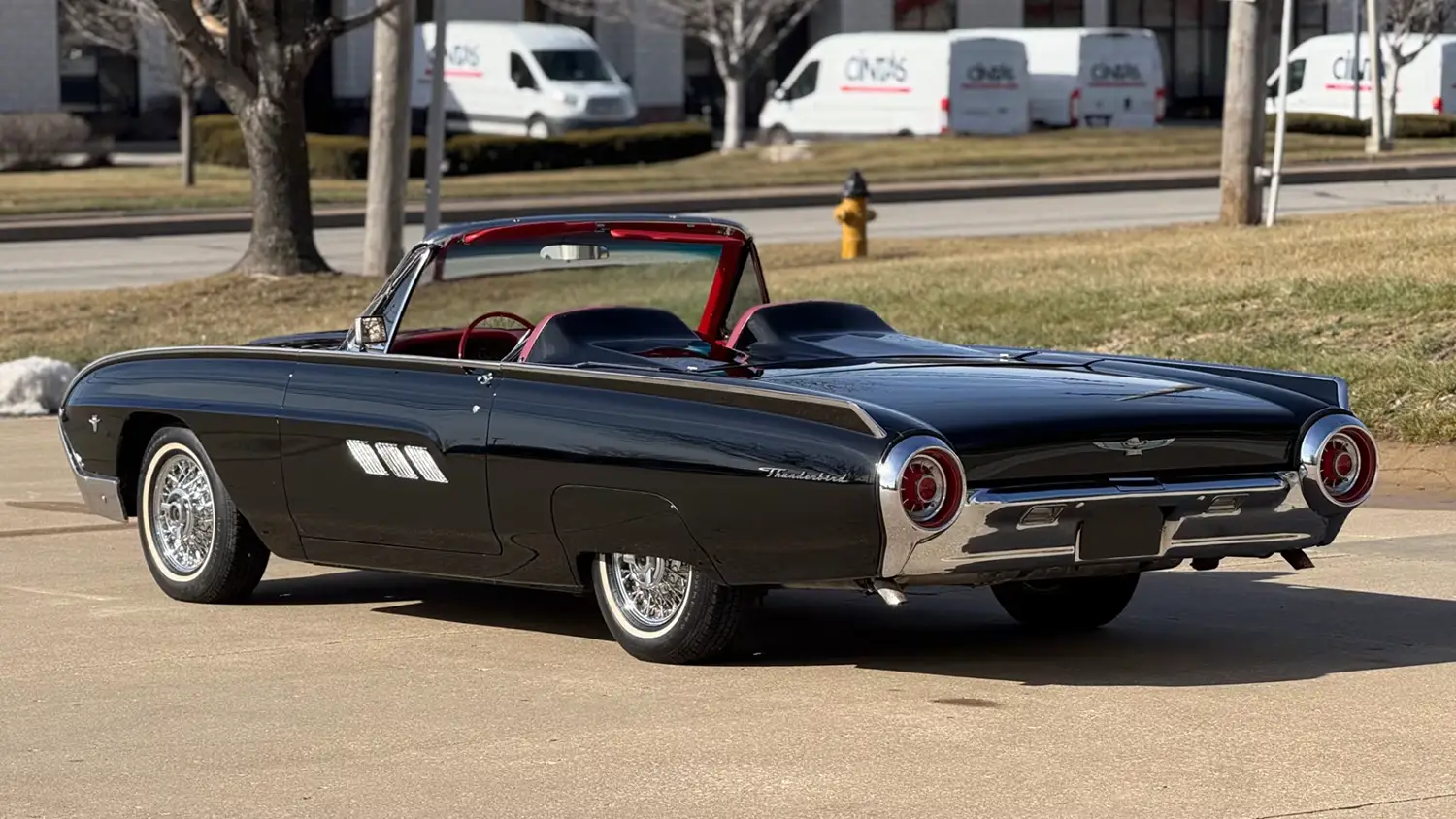
Power and Performance of the 390 CI V-8
The 1963 Ford Thunderbird Convertible is powered by the robust 390 CI V-8 engine, coded ‘Z’ from the factory. This engine was the standard powerplant for the model, delivering a significant amount of power. The V-8 is paired with an automatic transmission, providing smooth and easy shifts. Dual exhaust allows the engine to breathe better while also lending a deep, characteristic burble. This powertrain combination makes the Thunderbird an excellent choice for modern highway travel. The performance feel is one of effortless torque and smooth, long-distance ability, exactly as Ford intended for their top-tier car.
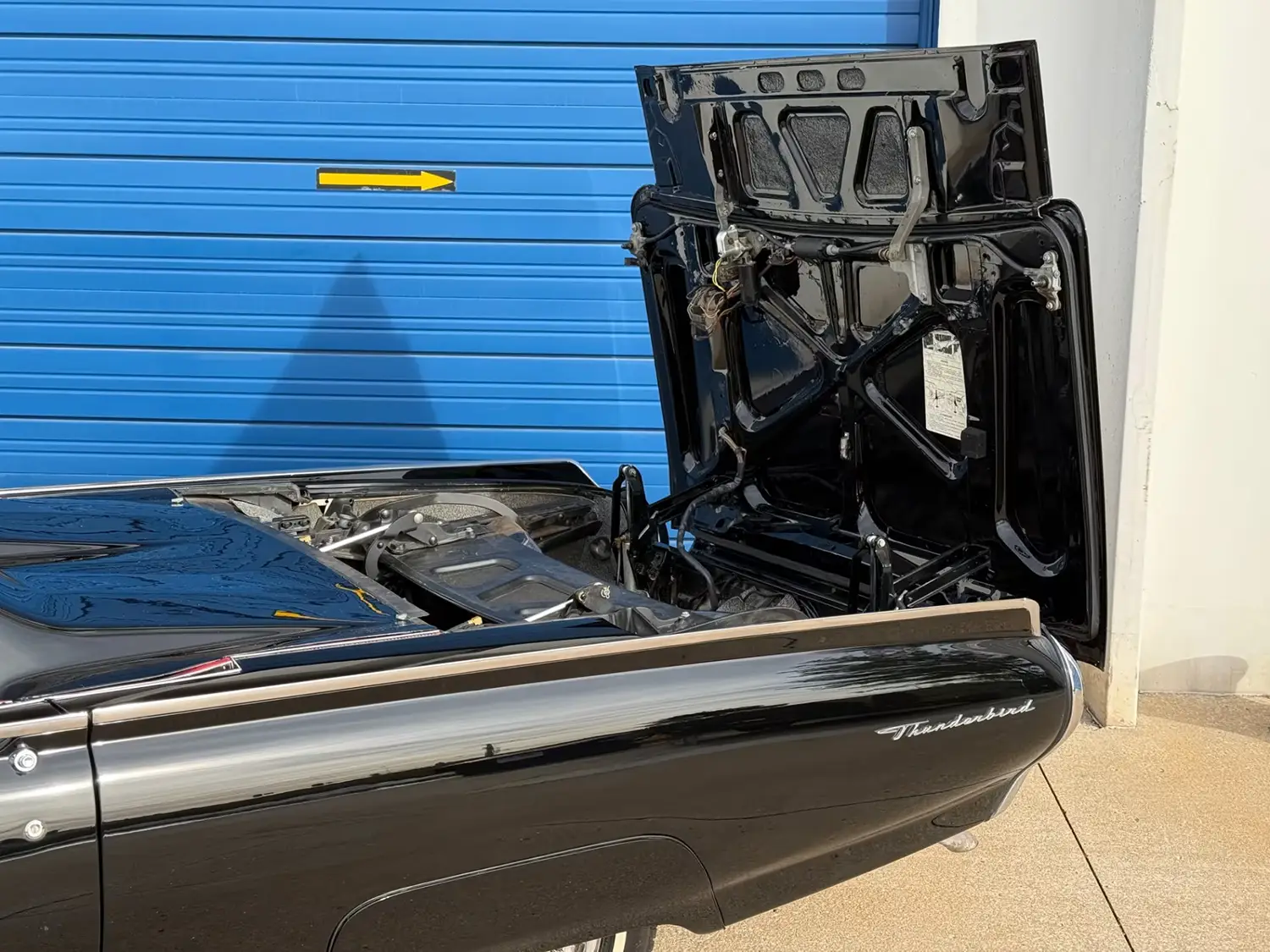
Summary of the Final “Bullet Bird”
The 1963 Ford Thunderbird Convertible stands as an enduring symbol of American style and mid-century modernism. Its sleek “Bullet Bird” styling, luxurious interior, and powerful 390 CI V-8 make it a quintessential classic. The Raven Black, Red interior, and convertible top combination is incredibly desirable and commands attention. This highly optioned example, complete with the Sports Roadster look and air conditioning, is a fine specimen of personal luxury from the final year of the popular third-generation design.
Disclaimer: This article is for informational and entertainment purposes only. The information provided is based on market trends and personal opinions and should not be considered financial or investment advice. Readers should always conduct their own research and consult with a professional advisor before making any decisions.
Source & Details: mecum.com

